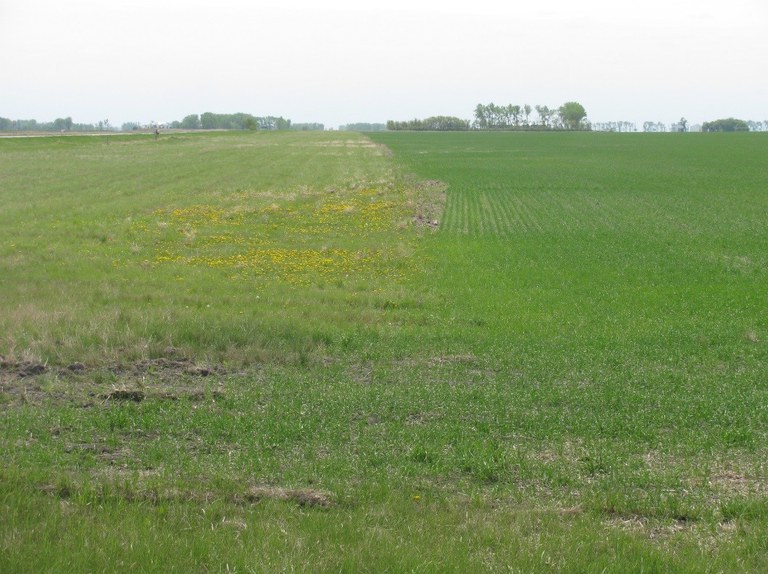Considerations for Managing Headland Soil Salinity and Soil Compaction

(Picture: Soluble salts on surface of soil south of Carrington, Spring 2015.)
Early spring 2015 was noted for widespread accumulation of dissolved salts on the surface of soil across North Dakota. Due to low precipitation last winter and early this spring, soil water loss by soil surface water evaporation and evapotranspiration by plants exceeded the amount of water received by the soil from rainfall. As soil water moved upward from sub-soil to the soil surface by capillary rise, it brought with it dissolved salts which precipitate/accumulate on the soil surface when water evaporates. Following heavy rains over, 2 inches in many parts of the state, these salts dissolved in and moved with rainwater below the soil surface (called leaching).
One way to improve soil drainage and minimize headland compaction is by planting perennial salt tolerant grasses to build up soil organic matter. Grasses develop abundant roots that contribute carbon to the soil, improve soil porosity, aeration, water infiltration, and enhance microbial activity. Instead of tilling headlands and exposing the soil surface in fall after harvest, let the grass grow. Some producers leave permanent grass strips on headlands approximately 50 feet wide between cropland and ditches to maintain the soil health and minimize salinity. The grass serves as a buffer for heavy traffic on soil, reducing compaction. Take advantage of salt-free topsoil conditions following the rains to plant mixed forage seeds that cannot tolerate salinity during germination. Some salt tolerant grasses include: Tall Wheat Grass, NewHy Hybrid Wheat Grass, Western Wheat Grass, or Alfalfa.

Grass growing on headland approximately 60 ft. wide on a producer's field.
Follow these links for more information:
http://www.ag.ndsu.edu/pubs/ansci/range/r1323.pdf - Grasses of the Northern Plains
http://www.ag.ndsu.edu/pubs/plantsci/soilfert/sf1087.pdf - Managing Saline Soils in ND
Jasper.Teboh@ndsu.edu
Soil Scientist


